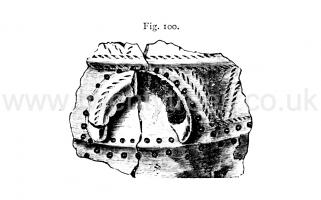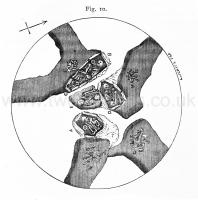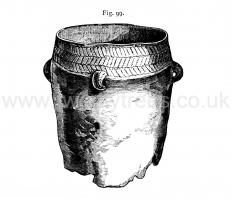Text this colour links to Pages. Text this colour links to Family Trees. Text this colour are links that are disabled for Guests.
Place the mouse over images to see a larger image. Click on paintings to see the painter's Biography Page. Mouse over links for a preview. Move the mouse off the painting or link to close the popup.
All About History Books
The Chronicle of Abbot Ralph of Coggeshall describes the reigns of Kings Henry II, Richard I, John and Henry III, providing a wealth of information about their lives and the events of the time. Ralph's work is detailed, comprehensive and objective. We have augmented Ralph's text with extracts from other contemporary chroniclers to enrich the reader's experience. Available at Amazon in eBook and Paperback.
Chapter V Pottery is in Grave Mounds and their Contents by Llewellynn Jewitt.
Ancient British or Celtic Period Pottery Mode of manufacture - Arrangement in classes - Cinerary or Sepulchral Urns - Food Vessels - Drinking Cups - Incense Cups - Probably Sepulchral Urns for Infants - Other examples of Pottery.
Food Vessels
The Food Vessels, the next division, vary considerably, in form, in size, and in ornamentation, from the very rudest to the most elegant and elaborate. These vesseis are generally wide at the mouth, and taper gradually downwards from the central band. They are found both where the interments have been by inhumation and by cremation, but much more frequently with the former. In these instances they are more usually placed near the head of the skeleton than in other positions, although they are occasionally found placed otherwise. Their average size is from four to six inches in height, and the ornamentation is produced in the same manner as has already been spoken of in reference to the cinerary urns, viz., by impressing twisted thongs or cords into the soft clay, by punctures, and by indentations produced in a variety of ways.
The "food vessels," like the cinerary urns, have evidently been made from the clay of the district where the interment has taken place, and they have been "fired" to about an equal degree of hardness with them.
Their general form will be best understood from the following examples, chosen from different districts.



The first example (fig. 99), from Trentham, in Staffordshire, is, it will be seen, of very rude form and make, and its ornamentation of simple character.
Fig. 102, from Fimber, in Yorkshire (5⅝ inches in depth and 6½ inches wide at the mouth), is of a more usual form, and is more advanced in point of ornamentation. Fig. 103 is from advanced in point of ornamentation. Fig. 103 is from Hitter Hill, Derbyshire, as is also fig. 104. They were found in the interments shown on figs. 10, 11, and 12.
The first of these urns is four and three quarter inches in height, and five and a half inches in diameter at the top. It is richly ornamented with the usual diagonal and herring-bone lines, formed by twisted thongs impressed into the soft clay, in its upper part. Around the body of the urn itself, however, is a pattern of lozenge form, very unusual on vessels of this period. The second urn is five and a quarter inches in height, and six and a quarter inches in diameter at the top. It is very richly ornamented with the characteristic patterns found on the Celtic urns of this district, and is one of the finest and most elaborately ornamented which has been exhumed.


